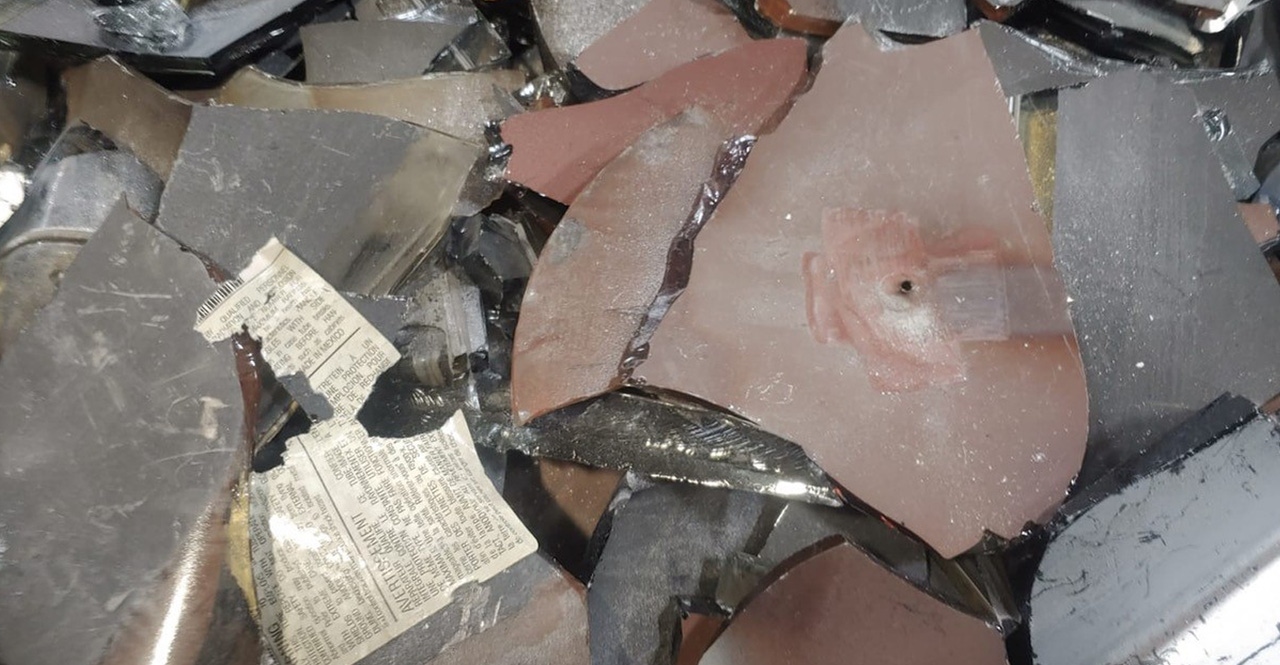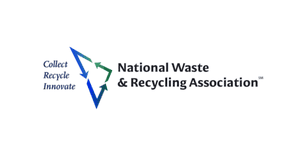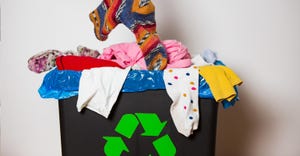Old Cathode Ray Tubes Still Keep Some Processors Busy

Cathode ray tubes (CRT) are a dying breed, dwindling from the waste stream for years; yet they still command attention. While quite dated, the tubes make up about 40% of the electronics waste stream by weight, as newer devices have become much lighter. And because half the tube contains lead and is considered hazardous waste, processors face intense regulatory oversight and safety issues, especially as headlines surface of companies who have stockpiled CRTs, and eventually abandoned them, posing serious environmental risks.
A still robust yet thinning supply, combined with the legal and safety concerns, has made building a business around recycling CRTs tough. But as more CRT processors close their doors, or stop taking them, it’s meant more business for companies like KC Recycling who have hung in there. KC CEO Pete Stamper says he’s making a “decent” profit.
The processor charges electronics recyclers to take their whole and broken tubes, which it runs through an impact mill to reduce the size of the glass, and then it removes ferrous metals. The output is silica with some lead, which KC sends to smelters who mix it with other materials to put in their furnaces.
Sending to smelters is the easiest and preferred route, as otherwise the lead and nonlead components must be separated, which KC does not do; though sometimes its suppliers separate materials to avoid paying to have them treated.
If separated says Stamper, “You are left with the lead-containing part, which is called funnel glass and has limited options for recycling. Though the nonlead portion is sometimes used as roadbed among applications.”
Smelters are quick to take it off his hands, as they pay no fee and sometimes charge to treat it. Also, they would otherwise have to buy the silica content. “So, they get the valuable lead and silica all in one, without an expense,” says Stamper.
While there is some salvageable copper, circuit boards, wood, and plastics, the glass tube is the biggest portion by weight and is the greatest recycling challenge since the lead has to be separated and shipped to a hazardous waste landfill if it’s not sent to a smelter.
“Processors collect fees to disassemble and remove copper, glass, etc. and then send to other processors. But they incur expenses to move it while still trying to make a profit. Some processors have been caught stockpiling CRTs and pocketing fees they collected,” says Stamper.
Over the years a few operations have shuttered, collectively leaving behind hundreds of millions of CRTs on their properties, including Closed Loop Refining and Recovery in Ohio and Arizona and Global Environmental Services in Kentucky.
“There are a lot of requirements in operating a hazardous waste recycling facility. We are audited by five agencies every year for environment, health, and safety protocol to ensure we are properly treating material and taking care of our workers,” says Stamper.
There are regulations around storage and transportation. And because it comes to KC as hazardous material there is extra documentation to keep track of the entire process from where it came from, to when it was processed to when it reached its final destination.
There is a heavy focus on worker safety.
“We have a powerful ventilation system because grinding glass makes a lot of dust. Workers wear full face respirators. They wear protective clothing, and they go through a decontamination process when they go on breaks and when they leave at the end of their shift,” says Stamper, who also tests workers every month for blood lead levels.
His company receives CRTs from across Canada and the western half of the U.S. To move them across the border requires preauthorization from the U.S. Environmental Protection Agency and Environment Canada.
Canadian and U.S. processors must submit records to electronics oversight boards showing how much was received, processed, and shipped, and they are required to have certification from the
Electronic Products Recycling Association. Canadian smelters must be certified to store and process the material.
“We work with electronic recyclers in California too, and would like to get (CRTs) from there but California disposes the leaded part in hazardous waste landfills. I think most CRT glass in North America is going to hazardous landfills.
Meanwhile, 70 percent of CRTs is glass so I would like to see public policy move toward driving recycling when there is a recycling option,” says Stamper.
Every pound of material that comes to KC is recycled; in a year the company processes about 10,000 tons of CRT glass, according to Stamper.
“We have capacity to do more, but it’s a matter of economics. We pay smelters to take it and they have a limit to what they can take,” he says.
Far West Metals, a division of Far West Recycling in Oregon, provides feedstock to KC. Far West owns materials recovery facilities, scrap metal yards, and an e-scrap yard and also brokers materials for e-scrap processors.
The company handles the U.S. permitting and export processes as well as does marketing, says Jeff Steinfeld, director of Sales, Far West Metals.
“We accept from electronic processors and help them find markets for a small broker fee. It helps the processors as well as ourselves because we get other materials from them. We want to help with every material type we can. [Far West is a broker of paper, plastic, e-scrap, metals and glass].
“KC has been a great partner in helping us find new solutions for the CRT glass,” says Steinfeld. The company’s ultimate goal is to stop CRT’s from being landfilled or stored in a landfill for possible future use.
“We would rather see material go direct to smelters,” he says, adding that every pound of glass or other material his company diverts to make new product is “a good thing.”
“It’s good for our business; it’s good for companies like KC; and it’s good for the environment.”
About the Author
You May Also Like




